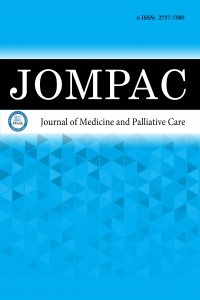1.
Beasley MB, Franks TJ, Galvin JR, Gochuico B, Travis WD. Acute fibrinous and organizing pneumonia a histologic pattern of lung injury and possible variant of diffuse alveolar damage. Arch Pathol Laborat Med.2002;126(9):1064-1070.
2.
Raghu G, Remy-Jardin M, Richeldi L, et al. Idiopathic pulmonary fibrosis (an update) and progressive pulmonary fibrosis in adults: an official ATS/ERS/JRS/ALAT clinical practice guideline. Am J Respir Crit Care Med. 2022;205(9):e18-e47.
3.
Wang Y, Li Y, Wang Q, et al. Acute fibrinous and organizing pneumonia; a case report. Medicine. 2019;98(8):e14537.
4.
Onishi Y, Kawamura T, Higashino T, Mimura R, Tsukamoto H, Sasaki S. Clinical features of acute fibrinous and organizing pneumonia: an early histologic pattern of various acute inflammatory lung diseases. PLoS One. 2021;16(4):e0249300.
5.
Gomes R, Padrão E, Dabó H, et al. Acute fibrinous and organizing pneumonia: a report of 13 cases in a tertiary university hospital. Medicine. 2016;95(27):e4073.
6.
Simmons GL, Chung HM, McCarty JM, et al. Treatment of acute fibrinous organizing pneumonia following hematopoietic cell transplantation with etanercept. Bone Marrow Transplant. 2017;52(1):141-143.
7.
Kumar S, Mishra M, Goyal K, Bhatt R, Joshi P, Bansal S. Acute fibrinous organizing pneumonia: a rare lung pathology. Monaldi Arch Chest Dis. 2019;89(2):1016.
8.
Ford D, Charoenpong P, Boparai S. Acute fibrinous organizing pneumonia: a new association. Chest. 2021;160(4):A1654.
9.
Kuza C, Matheos T, Kathman D, Heard SO. Life after acute fibrinous and organizing pneumonia: a case report of a patient 30 months after diagnosis and review of the literature. J Crit Care. 2016;31(1):255-261.
10.
Damas C, Morais A, Moura CS, Marques JA. Acute fibrinous and organizing pneumonia. Pulmonol. 2006;12(5):615-620.
11.
Lu J, Yin Q, Zha Y, et al. Acute fibrinous and organizing pneumonia: two case reports and literature review. BMC Pulm Med. 2019;19(1):141.
12.
Onishi Y, Kawamura T, Nakahara Y, et al. Factors associated with the relapse of cryptogenic and secondary organizing pneumonia. Respir Investig 2017;55(1):10-15.
13.
Sauter JL, Butnor KJ. Expanding the spectrum of pulmonary histopathological manifestations of antisynthetase syndrome: anti-EJ-associated acute fibrinous and organizing pneumonia. Histopathol. 2014;65(4):581-582.
14.
Ning YJ, Ding PS, Ke ZY, Zhang YB, Liu RY. Successful steroid treatment for acute fibrinous and organizing pneumonia: a case report. World J Clin Cases. 2018;6(15):1053-1058.

